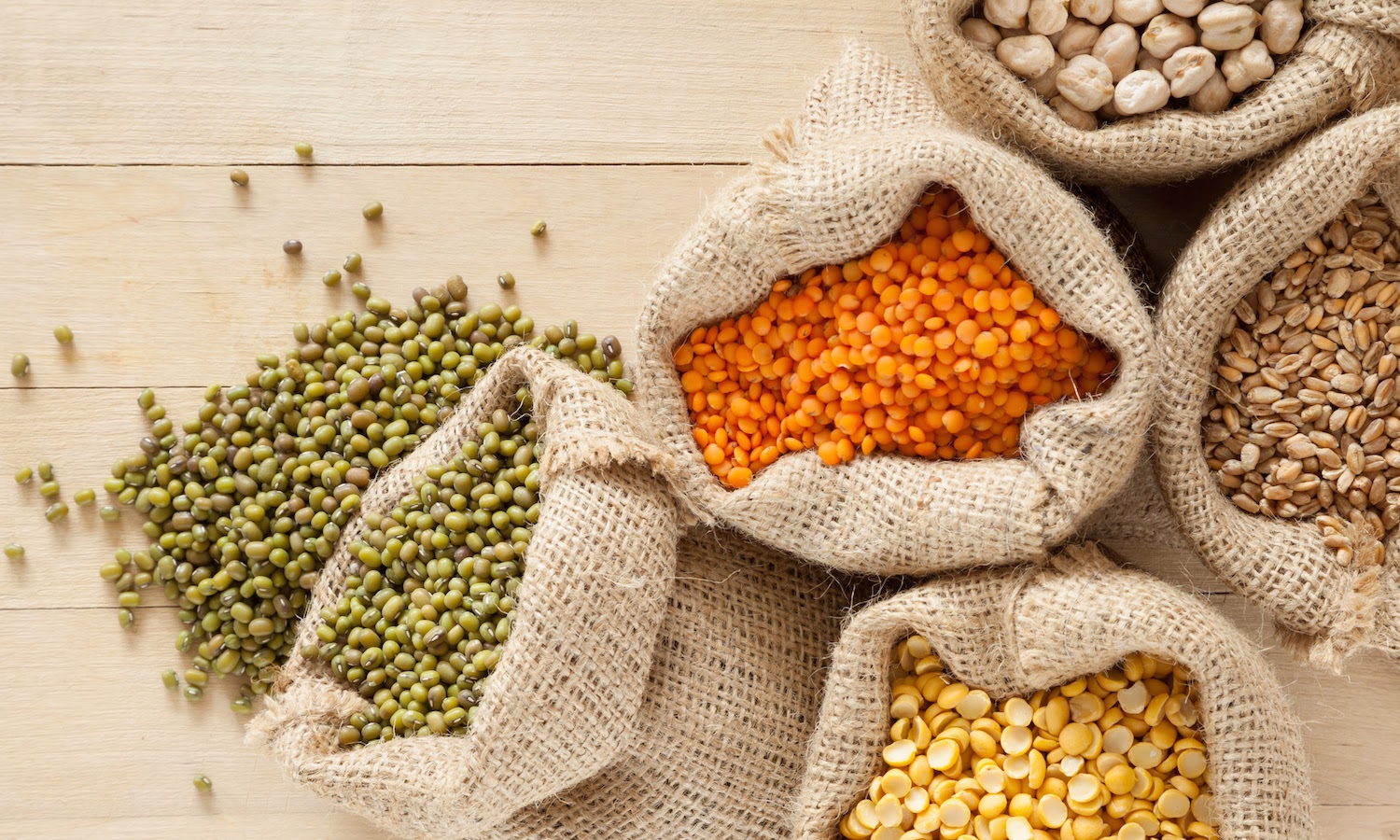Contributing Author: Kirby Barth
February 10th is the first annual World Pulses Day, a day put aside to celebrate the many ways these crops are key to sustainable farming and healthy diets. Pulses are the dried seeds of common legume plants, such as fava beans, chickpeas, lentils, and lupins. As climate change creates more challenges for farmers and eaters alike, the world will depend more on pulses for their ability to their resilience and tastiness.
Pulses have been a staple to the human diet for thousands of years, and today, eaters enjoy these delicious plants in foods like falafel, hummus, and lentil based dishes. Because pulses are high in protein and packed with essential micronutrients and vitamins, they are frequently used as the foundation of meat alternatives. The double food and environment pyramid by Barilla Center for Food and Nutrition is a tool that helps explain how legumes and other foods have both nutritional and environmental benefits.
In celebration of these climate-resilient crops, and the international day that honors them, Food Tank has compiled a list of some of our favorite articles written about pulses in the last few years. This February 10th, plan to cook your own meal with pulses and share what you made with the world using the hashtag #LovePulses.
1. Eat Pasta and Pulses as Part of a Sustainable Diet
Studies show that 78 percent of households always have pasta in the pantry. Pasta has a long shelf life and is also a substantial source of plant protein. A common partner to pasta is the environmentally friendly and nutritious pulse family. Lentils, fava beans, chickpeas and more can make a perfect complement to your pasta dish.
2. The International Year of Pulses
The UN declared 2016 the International Year of Pulses and elected six special ambassadors from around the world to promote this food group. This declaration aimed to highlight the nutritional and environmental benefits of growing and eating pulses.
3. A Diet Change to Fight Climate Change: Eat More Pulses
Pulses are a great source of fiber, protein and iron, and give back to the planet as well. Requiring very little water to grow, pulses also forge their own nitrogen, removing the need for nitrogen fertilizers that contribute to greenhouse gas emissions every day.
4. 10 Ways to Celebrate the International Year of Pulses
The U.N. Food and Agriculture Organizations has a video highlighting unique opportunities for pulses to contribute to food security and combat climate change.
5. Legumes and Beans: One Key to Improving Food Security in Malawi
In 2012, 1.6 million people in Malawi were impacted by food insecurity. The U.S. Department of Agriculture’s Agriculture Research Service (ARS) worked with farmers at the University of Malawi’s Bunda College to develop drought-resistant legumes.
6. Drought-Resistant White Beans Bring Hope to Smallholder Farmers in Ethiopia
Food Tank interviews the Consultative Group on International Agricultural Research (CGIAR) to discuss their recent report on a catastrophic drought that hit Ethiopian smallholder farmers hard, and the new drought-resilient bean variety currently being developed for the region.
7. Sweet Sugar Snaps or Sour Pancakes? The Cultivation of Legumes in Ethiopia for Export
Ethiopia has almost perfect climate conditions to grow legumes like sugar snaps and snow peas. The Sustainable Trade Initiative (IDH) is making sure that the infrastructure is right to successfully grow these crops throughout the country.
8. Millets, Sorghum, and Grain Legumes: the Smart Foods of the Future
The Smart Food Project works to promote consumption of nutrient-rich and drought-tolerant crops, including grain legumes like chickpea, pigeon pea, green gram, and groundnut
9. Hampton Creek Is Replacing Eggs with Yellow Peas
Hampton Creek Foods choose to use yellow peas in place of egg in some of their mayonnaise and cookie dough recipes in order to eliminate the need for factory farmed eggs.
10. Greenpeace Recommends 50 Percent Reduction in Meat and Dairy Consumption by 2050
According to a recent report by Greenpeace, global animal production and consumption must decrease by 50 percent by 2050 to ensure planet and human health. Protein and fiber-dense pulses make a great plant substitute to meat products.











